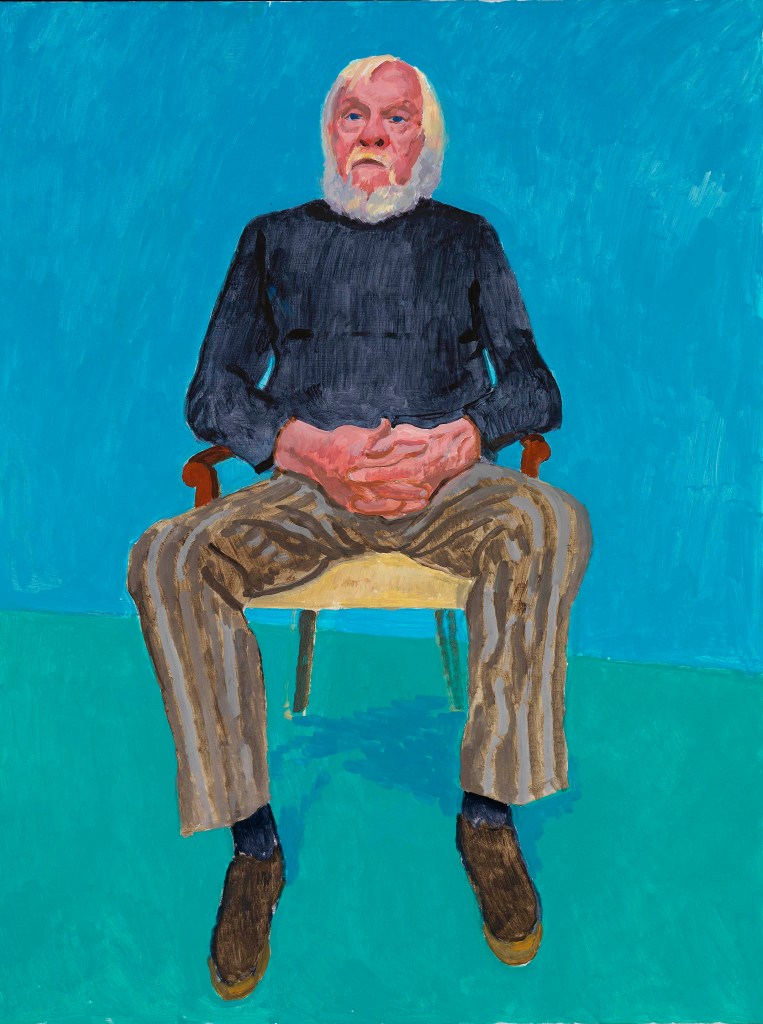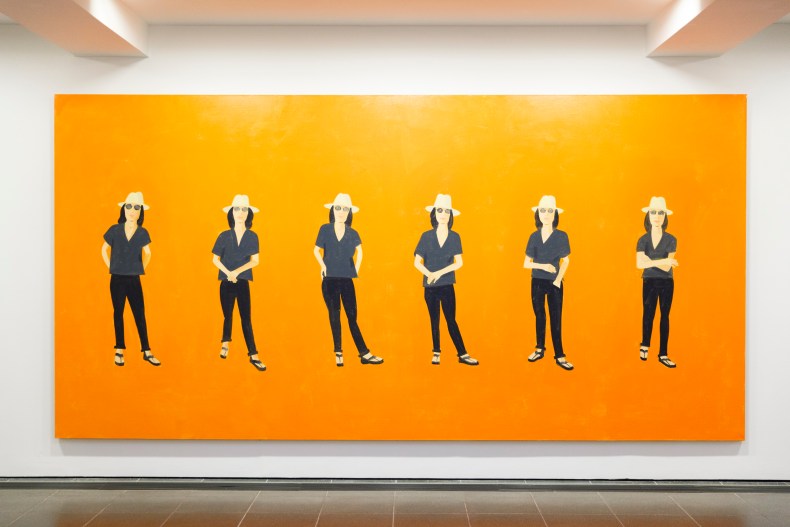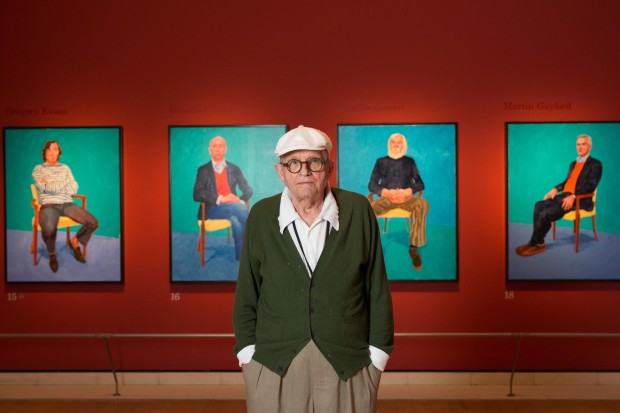‘David Hockney RA: 82 Portraits and 1 Still-Life’, the painter’s new exhibition at the Royal Academy, is the visual equivalent of a sonnet sequence or a set of musical variations. Each canvas is four feet by three and all but two of them portray a single subject, full-length, seated in the same chair. The fabric of the chair’s seat becomes more or less bright yellow as the other colours in the image demand; the angle of the chair and the sitter’s posture shift slightly with each iteration; and, since the whole series is hung chronologically in order of composition, from July 2013 to March 2016, a strong sense emerges of the duration of Hockney’s sustained performance. A series of portraits of others comes to seem deeply personal.
Hockney’s flamboyant skill as a colourist is to the fore. Areas of vibrant yellow, pink, green, and blue abut each other, with sometimes a glimpse of primed canvas or charcoal outline appearing at the borders. Some passages of paint give an impression of considerable speed, while others, especially faces and hands, show more careful and detailed work. In the first portrait in the series, a zigzag patterned rug sits on the floor, where individual floorboards are visible, while the wall behind is marked with wave-like strokes of blue. By the time of the paintings made in early October 2013, Hockney has flattened out the background into two adjoining planes of blue and turquoise, and from then on the formal vocabulary of the paintings becomes more and more refined.
John Baldessari, 13–16 December (2013), David Hockney. Photo: Richard Schmidt; © David Hockney

Small variations of gesture, posture, and dress come to have an outsized expressiveness: whereas John Baldessari sits square-on to the gaze, with his legs spread wide and his hands looming almost as large as his head, Charlie Scheips hoists his leg up on the armrest in an parody of masculine dominance. Twice the symmetry of the sequence is broken: a double portrait of teenagers Augustus and Perry Barringer flips the canvas to landscape format, and crops the sitters just above the knee, while the one still life, Fruit on a Bench, stands in for a session when the sitter was unexpectedly unable to attend – minor irregularities, which serve to throw the unity of the rest of the exhibition into joyful relief.
Having shown a collection of portraits with striking black backgrounds in ‘Black Paintings’ at Timothy Taylor Gallery in 2015, Alex Katz has progressed to bright orange backgrounds in the new portraits on show in ‘Quick Light’ at the Serpentine Gallery. The six portraits in this exhibition show him on top form even as he approaches his tenth decade: Emma and Vivien (both 2015) are large-scale ‘multiple’ portraits, in which the same figure is repeated in different poses across a single long canvas, while Ada finds new depth and beauty in the face of the muse whom Katz has painted dozens of times across many decades. ‘Andy Warhol ripped me off twice,’ Katz told me when I interviewed him for Apollo in 2014: ‘first with the flat backgrounds and then with the double portraits’; in ‘Quick Light’ he confirms his reputation as a portraitist of seemingly inexhaustible inventiveness, flair, and talent.
Installation view of Vivien (2015) at the Serpentine Gallery. Courtesy the artist, Gavin Brown’s Enterprise, Rome/New York, Timothy Taylor Gallery, London and Thaddeus Ropac, Paris/Salzburg

The main emphasis of the Serpentine exhibition, however, is on Katz’s landscapes, with 13 of them on display from different phases of his career. Fog (2014) and West 1 (1998) reveal Katz’s mastery of how to give depth and rhythm to a painting in light conditions of extreme whiteness and darkness respectively, while the majestic City Landscape (1995) – a startling nocturne on a canvas 20 feet by 10 – finds Katz working on an imaginative scale of which few artists today are capable.
‘David Hockney RA: 82 Portraits and 1 Still-life’ is at the Royal Academy, London until 2 October.
‘Alex Katz: Quick Light’ is at the Serpentine Gallery, London, until 11 September.



